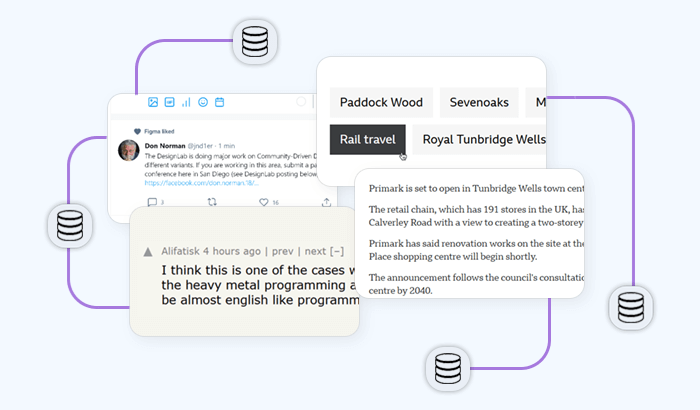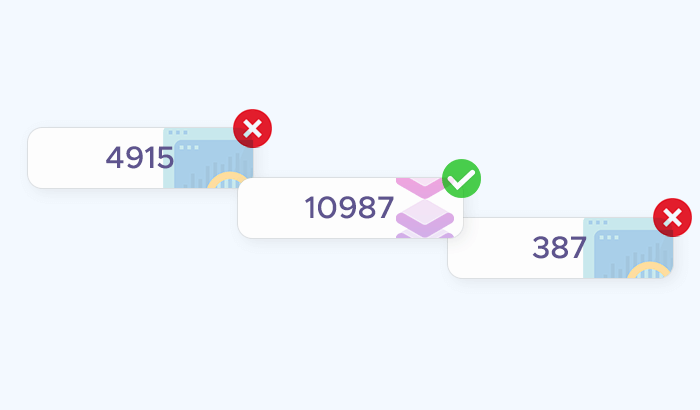- What is a sneaker bot?
- How do sneaker bots work?
- What are sneaker proxies?
- Types of sneaker bots
- How to create a sneaker bot
- Is sneaker botting legal?
- The sneaker botting industry
- How can sneaker retailers prevent sneaker bots?
- How sneaker bots avoid detection
- Why choose Infatica as a sneaker proxy provider?
- Frequently Asked Questions


Sneaker bots are a favorite tool of many e-commerce companies: If you set up a sneaker bot correctly, it can help you gain a real competitive advantage over other resellers. To use these bots to their fullest potential, read our guide that answers the most popular questions on this topic: What is a sneaker bot? What does a bot do? How do shoe bots work? How to create them? and more.
What is a Sneaker Bot?
Most tasks on the internet can be automated as the very structure of a web page is organized hierarchically via HTML, the HyperText Markup Language. “Markup” is the keyword here: Web developers use different HTML tags to divide different parts of the web page into segments. For instance, a table storing data about the latest sneaker collection and its prices will have the corresponding <table> tag.
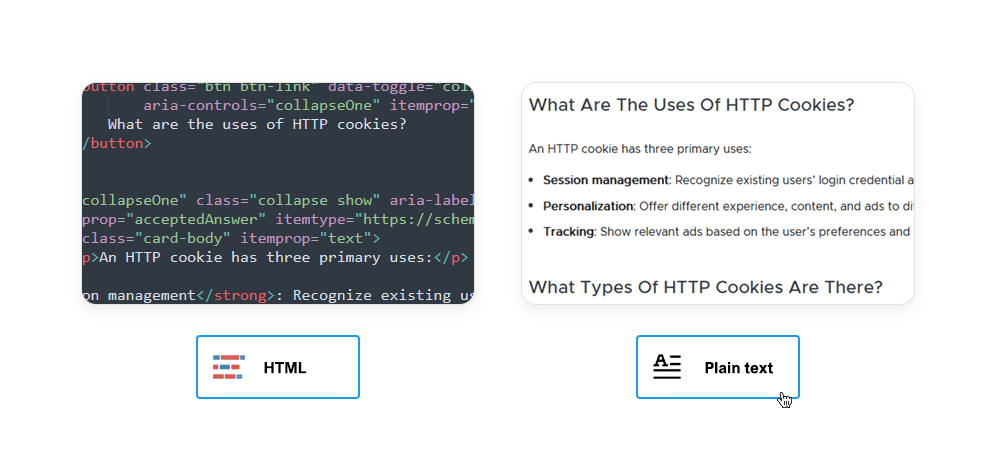
Sneaker e-stores and their online queues are no different: We can write automated software that will buy (and even resell) sneakers and will run 24/7, across any number of online shops. This is a sneaker bot (also called a shoe bot) – a software program designed to automate the process of purchasing limited edition sneakers online.
Sneaker bots are often used by sneaker enthusiasts and resale sites who want to buy the latest limited availability-releases before they sell out, and they can give users an advantage in purchasing limited edition sneakers by automating the process of searching for and buying them.
How Do Sneaker Bots Work?
Sneaker bots work by scraping the website or marketplace for information about upcoming sneaker releases, such as the date, time, and URLs of the release. When the release goes live, the bot will navigate to the product page, select the desired size, add the product to the cart, and complete automated checkout using the cook groups’ credit cards.
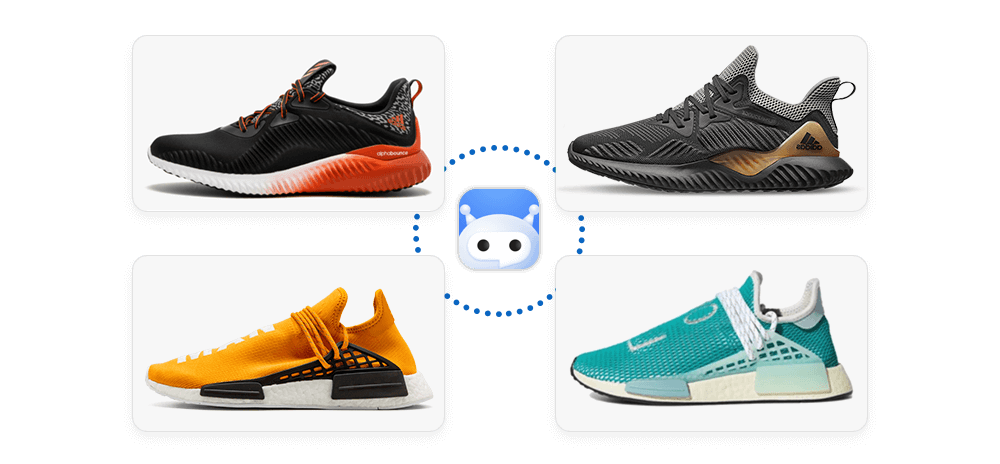
To avoid detection and being blocked by the site's bot mitigation software, bots often use specialized techniques such as spoofing user agents, rotating IP addresses, and even utilizing CAPTCHA solving services and backdoors. Bot operators may also add proxies to the mix, which provide bots with multiple IP addresses from different locations to simulate the behavior of multiple users.
What Are Sneaker Proxies?
Sneaker proxies are specialized proxies that are used by sneaker enthusiasts and their reseller bots to purchase limited edition kicks online. These proxies allow users to buy sneakers from online stores and marketplaces without being detected and blocked by the site's anti-bot measures.
Sneaker proxies are typically datacenter proxies and are often used in conjunction with sneaker bots. This combination can give users an advantage, as they can automate the shopping process, and can do so from multiple locations simultaneously.
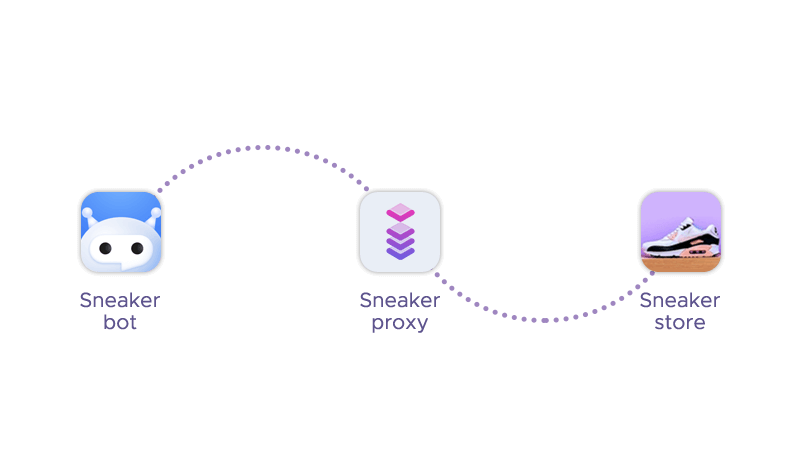
They work by providing users with multiple IP addresses from different locations, allowing them to simulate the behavior of multiple users and avoid being detected as a bot. They also often come with high speeds and low latency, which is important for sneaker enthusiasts who need to be able to make purchases quickly and without delays.
Types of Sneaker Bots

Sneaker copping software comes in many forms – let’s take a closer look at each type:
Scraping Bots
They are used for scraping data from sneaker websites, such as product information, prices, and availability. They can also perform inventory monitoring of popular shoes and alert the users when they are in stock.
Footprinting Bots
These solutions are used for finding unpublished URLs of sneaker products before they are officially released. They find the products’ footprinting by scanning the website’s code and looking for hidden links or patterns. This gives them an advantage over other sneaker buyers who have to wait for the official launch.
Account Creation Bots
They are used for multiple account creation on sneaker websites using disposable emails and fake personal information. They can bypass the verification processes and CAPTCHA challenges that are meant to stop bot activity. Having multiple accounts allows them to increase their chances of buying rare sneakers.
Account Takeover Bots
These products are used for credential cracking and credential stuffing and target users on sneaker websites. They can do this by cracking the passwords using brute force or dictionary attacks, or by stuffing the login forms with stolen credentials from data breaches. Once they gain access to the accounts, they can use them to buy sneakers or sell them to other bot users.
Scalper Bots
They are used for buying sneakers at lightning speed as soon as they are released. They can automate the checkout process and bypass the security measures that are designed to limit the purchase quantity. Scalper bots can also use proxies to disguise their IP addresses and avoid being detected or blocked.
Denial of Inventory Bots
These software instances are used to hoard inventory of sneakers without actually buying them. They can do this by adding multiple pairs of sneakers to their carts and keeping them there for as long as possible, preventing other buyers from accessing them. They can also use fake credit cards or invalid payment methods to delay the transaction process. Denial of inventory is often used by malicious actors who want to sabotage the sales of sneaker websites or competitors.
Cashing Out Bots
They are used for validation of stolen cards or gift cards that are obtained from illegal sources. They can do this by making small purchases on sneaker websites and checking if the transactions go through. If they do, they can use the cards to buy more expensive items or sell them to other fraudsters. Cashing out bots are often used by cybercriminals who want to launder their money or profit from their illicit activities.
Proxy Bots
They are used to disguise users’ identities and locations when they access sneaker websites. They can do this by routing their traffic through proxies, which are intermediary servers that hide their real IP addresses. Proxy bots can help the users avoid being detected, blocked, or banned by the sneaker websites or their anti-bot measures.
How to create a sneaker bot
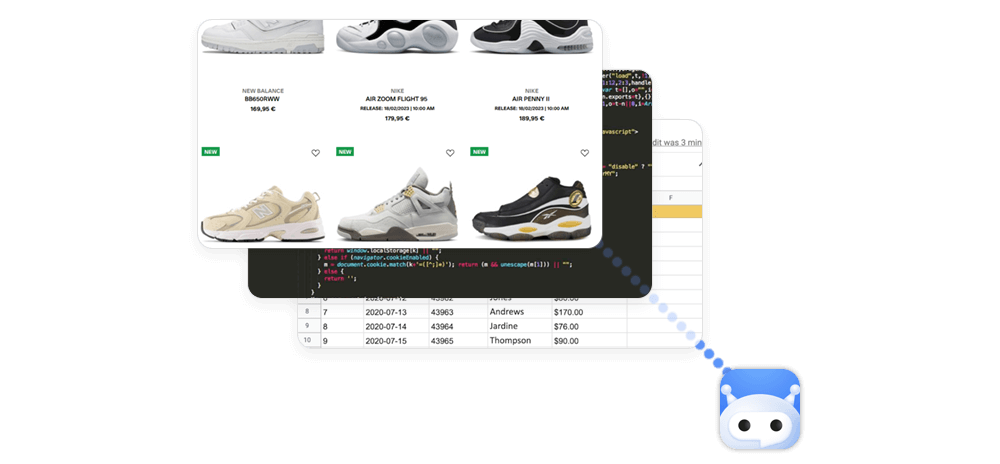
Creating a bot can be a complex and time-consuming process, as it involves a deep understanding of programming, web scraping, and automation. Here are some general steps that can be taken:
Choose a programming language: Sneaker bots can be created using a variety of programming languages, such as Python, JavaScript, and Java. Choose a language that you are comfortable with and that has strong libraries for web scraping and automation.
Understand the target website: Before creating an automated bot, it's important to understand the structure and behavior of the target website. This includes identifying the URLs and parameters of the product pages, as well as any protective measures that may be in place.
Develop the bot logic: The core of the sneaker bot involves writing code that navigates to the product page, selects the desired size, adds the product to the online shopping carts, and checks out. This involves using web scraping techniques to extract information from the website, as well as automation techniques to simulate the behavior of human users.
Test the final product: Once the code has been written, it's important to test it thoroughly to ensure that it works as expected. This includes testing it on multiple websites and marketplaces, as well as under different network conditions.
Use anti-detection techniques: To avoid being detected by the site's anti-bot measures, it's important to use anti-detection techniques such as rotating IP addresses, spoofing user agents, and using CAPTCHA solving services.
Using a third-party solution
Alternatively, you can use a pre-made sneaker bot. You may have less control over its functionality and have to pay a subscription fee, but it’s much easier to set up. Here are some popular sneaker bots – you can use Infatica proxies with any of popular sneaker bots:
- Nike Shoe Bot: Works with most major shoe stores, including Adidas, Yeezys, Footlocker, and over 100 Shopify sites. It has a user-friendly interface, automated tasks support, release monitor, and Captcha solver.
- Kodai: Supports over 150 different websites and has proven success with over 1,000,000 user checkouts to date. It has a sleek design, advanced features, and regular updates.
- Wrath: Claims to be the fastest and most reliable copping solution for Supreme. It has a simple and intuitive dashboard, auto-checkout, restock monitor, and proxy support.
- AIO bot: Can cop from multiple sites, including Shopify, Supreme, Footsites, and more. It has a powerful and flexible interface, smart task management, auto mode, and analytics.
- Prism: Focuses on Shopify sites and has a high success rate. It has a modern and elegant design, easy setup, auto-restock, and Captcha harvester.
- Trickle: Works with Supreme and Shopify sites. It has a minimal and clean interface, fast checkout, restock alerts, and proxy tester.
- Valor: Supports Supreme, Shopify, and Footsites. It has a robust and secure system, auto mode, release calendar, and proxy generator.
- MEKpreme: Made exclusively for Supreme products. It has four copping modes, auto-checkout, restock monitor, and Captcha bypass.
Is Sneaker Botting Legal?
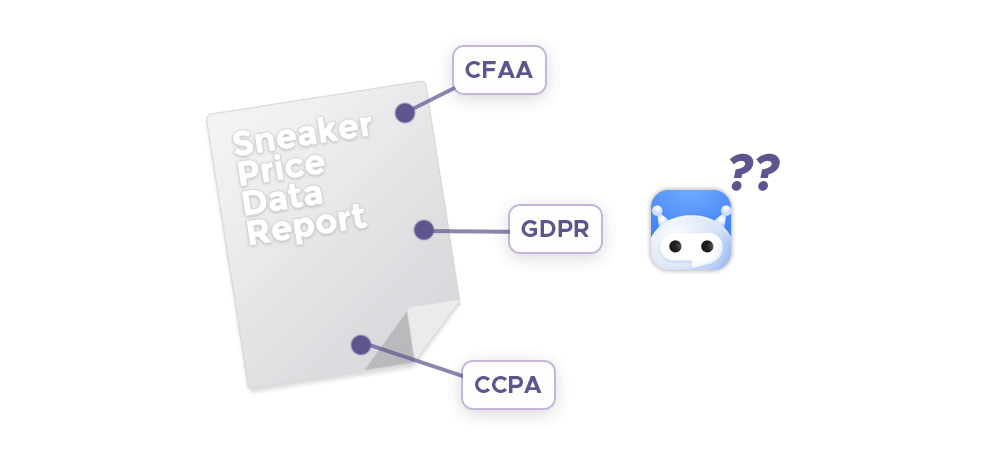
To quote our recent web scraping legality overview:
Q: Are sneaker bots illegal for commercial use?
A: In most legislations, a key factor that makes web scraping legal is transforming collected data to generate value for the user. If you parse airfare data to create a price aggregator, it’s an OK use of their data; if you simply copy and republish it to your own website, you’re breaking a law.
👩⚖️ Further reading: Is web scraping legal?
Sneaker copping via automated software is an interesting case: Using this data to build a sneaker aggregator may render it legal in the court’s eyes. Most people, however, use sneaker bots to resell shoes in a quick succession – if the scale of this operation is sufficient, some merchants might pursue legal action to combat bots. Additionally, the use of sneaker bots and proxies may violate the terms of service of the online stores and marketplaces, and may result in the user's account being banned or restricted.
The Sneaker Botting Industry

The sneaker bot industry has become a big business, with some sneaker bots selling for thousands of dollars and some reseller companies making millions of dollars from flipping sneakers. The industry has also created an ecosystem of related services and products, such as proxies, servers, cook groups, monitors, and captcha solvers. These are meant to enhance the performance and security of the sneaker bots and help the users increase their chances of copping sneakers.
The sneaker bot industry has also faced some challenges and controversies, such as legal issues, ethical concerns, and protective measures. Some sneaker websites and brands have tried to prevent or limit the use of sneaker software by implementing various security features, such as captchas, detection mechanisms, purchase limits, and IP bans. Some sneaker fans and consumers have also criticized the industry for creating unfair competition, inflating prices, and ruining the culture and passion of sneaker collecting.
The sneaker bot industry has a lot of potential and opportunities for the future, as the global sneaker market continues to grow and evolve. Some possible trends and developments include:
- Emergence of new sneaker bot platforms and technologies, such as artificial intelligence, machine learning, and blockchain.
- Expansion of the industry to other regions and sneaker resale markets, such as Asia, Europe, and Africa.
- Diversification of the industry to other products and niches, such as clothing, accessories, and collectibles.
- Collaboration and integration of the industry with other industries and sectors, such as fashion, entertainment, and gaming.
How can sneaker retailers prevent sneaker bots?
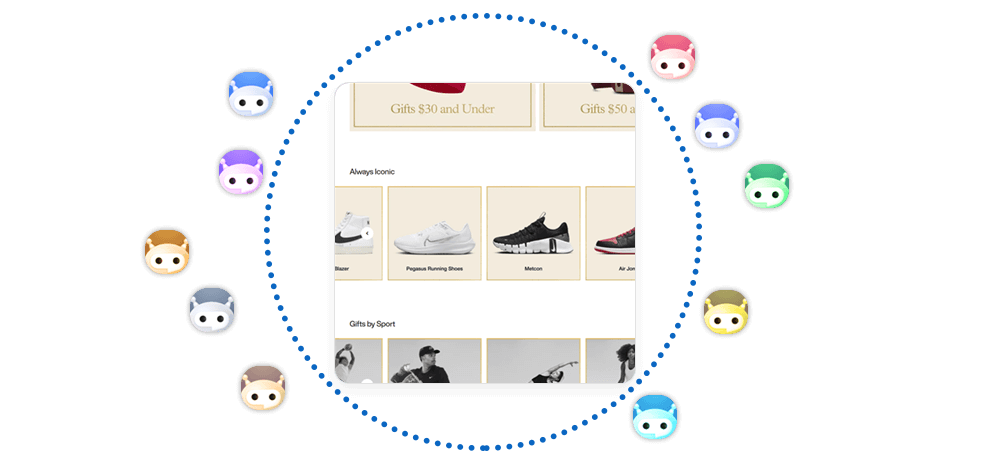
In some scenarios, bad bots can create problems for sneaker shops, such as unfair competition, inflated prices, and reduced customer satisfaction. Therefore, sneaker retailers implement various measures to prevent or limit the use of sneaker bots on their websites. Some of these bot protection measures are:
1. Block known bot traffic
Sneaker retailers can use various tools and methods to identify and block the IP addresses, domains, or devices that are associated with known bot activity. For example, they can use blacklists, firewalls, or web application firewalls to filter out the traffic that comes from suspicious sources.
2. Monitor traffic & identify bots
Sneaker retailers can also use various tools and methods to monitor and analyze the traffic that comes to their websites and identify the patterns or behaviors that indicate bot activity. For example, they can use analytics, logs, or machine learning to detect the traffic that has high request rates, low bounce rates, or abnormal browsing patterns.
3. Act on flagged traffic with bot mitigation software
Sneaker retailers can also use various tools and methods to act on the traffic that is flagged as bot activity and prevent sneaker bots from completing the purchase process. For example, they can use mitigation software, such as Imperva, Akamai, or Cloudflare, to challenge, redirect, or block the traffic that is suspected to be bots.
4. Filter bots with web traffic management
Sneaker retailers can also use various tools and methods to filter and manage the traffic that comes to their websites and prioritize the traffic that is likely to be human. For example, they can use web traffic management, such as Queue-it, to create virtual waiting rooms, limit the number of concurrent sessions, or enforce the purchase limits.
5. Allocate time for after-sale audits
Sneaker retailers can also allocate some time for conducting after-sale audits and reviewing the transactions that are completed on their websites. They can use various tools and methods to verify the validity and authenticity of the transactions and cancel or refund the transactions that are found to be fraudulent or bot-related.
6. Run exclusive member-only sneaker drops
Sneaker retailers can also run exclusive member-only sneaker drops and limit the access to the sneaker products to the registered and verified members of their websites. They can use various tools and methods to ensure the identity and loyalty of the members and prevent the use of fake or stolen accounts.
How Sneaker Bots Avoid Detection

Sneaker software is constantly facing some challenges and obstacles, such as anti-bot measures, security features, and detection systems. To address this problem, they implement some measures to avoid or bypass detection and increase their chances of copping sneakers. In return, most bot makers use these measures:
Fake Browser Fingerprints
Bots can mimic genuine customers by using fake fingerprints and user agents. Browser fingerprints are the unique identifiers that are generated by the browser based on the configuration, settings, and plugins. User agents are the strings that are sent by the browser to the website to identify the browser type, version, and operating system. They can use tools to make their requests look like they are coming from different browsers and devices.
Human Behavior Simulation
Bots can also simulate human behavior by adjusting their speed and mouse movements. Speed is the time interval between the requests that are sent by the bot. Mouse movements are the actions that are performed by the bot on the website, such as clicking, scrolling, or hovering. These measures can provide slower speed and mouse movements to make requests look like they are coming from human customers who are browsing the website normally.
Residential IPs
Bots can also use residential IPs to disguise their locations and identities. Residential IPs are the IP addresses that are assigned by the internet service providers to the residential users. Residential IPs have a higher reputation and trustworthiness than data center proxies, which are the same addresses that are used in data centers. Using residential IP addresses, it’s possible to make requests look like they are coming from different locations and households.
CAPTCHA Bypassing
Bots can also perform CAPTCHA bypassing via identifying images, typing words, or clicking buttons. Bot operators can use various techniques to bypass the CAPTCHAs, such as hiring offshore workers, using ML/AI, or generating fake images with generative adversarial networks.
Normal Request Volumes
Bots can also maintain normal request volumes to avoid raising suspicion or triggering alarms. Request volumes are the number and frequency of the requests that are sent by the bot. It’s possible to use fewer requests per IP and browser instances to make sneaker bot traffic look normal and consistent. Bots can also use different request volumes for different websites and products to avoid being detected by the patterns or anomalies.
Why choose Infatica as a sneaker proxy provider?
If you are looking for a reliable, fast, and secure sneaker proxy provider, you should consider Infatica. Infatica offers a range of features and benefits that make it stand out from other proxy providers. Some of these features are:
- 99.9% uptime and low response time: Infatica guarantees that its proxies are always online and ready to use, with minimal downtime and latency. You can enjoy a smooth and uninterrupted sneaker botting experience with Infatica’s proxies.
- Top speed and performance: Infatica provides high-speed proxies that can handle large volumes of automated traffic and requests. You can cop sneakers faster and easier with Infatica’s proxies, which can bypass the security measures.
- Privacy and security: Infatica ensures that your personal information and online activity are protected and encrypted. You can use Infatica’s proxies to hide your real IP address and location, and avoid being detected, blocked, or banned by the sneaker websites.
Final words
In this article, you have learned about the sneaker bot industry, how it works, and what are the challenges and opportunities it faces. You have also learned about the different types of bots, how they avoid detection, and how sneaker retailers can prevent them. Finally, you have learned about Infatica, a sneaker proxy provider that offers a range of features and benefits that make it a great choice for sneaker botting.
Frequently Asked Questions
- StockX: a popular marketplace for buying and selling authentic sneakers, streetwear, and other items.
- GOAT: a similar platform to StockX, that specializes in authenticating and reselling shoes.
- eBay: a general e-commerce platform where you can sell kicks and other items.
- Grailed: a marketplace for high-end men's fashion.
- Depop: a social shopping app where you can sell various items to a community of buyers.










